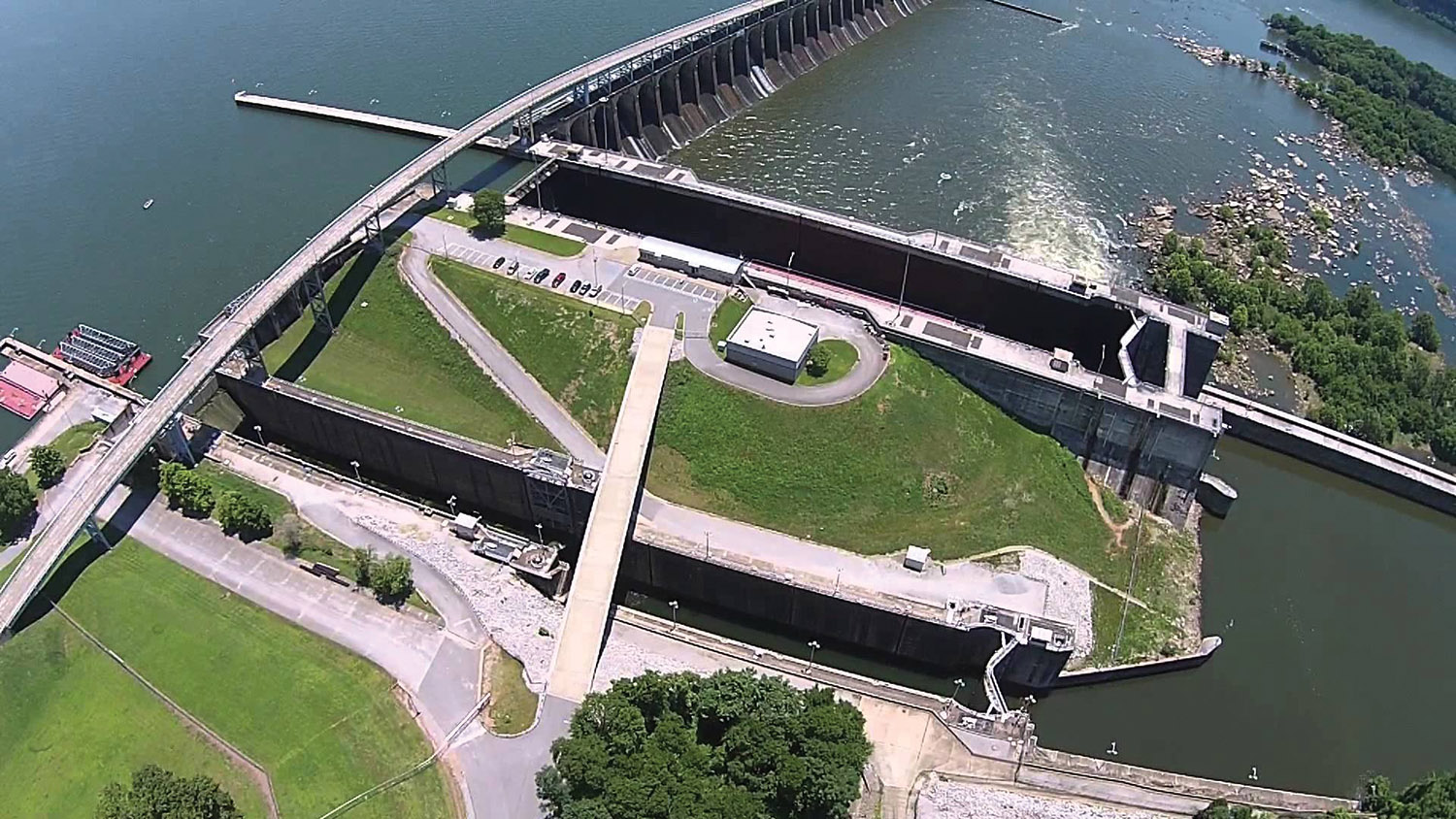The main chamber of Wilson Lock and Dam will not reopen until mid-June, according to the latest estimates, nine months after popping noises caused its closure September 25.
The initial timeline estimated an April 20 reopening.
“That original timeline was our best estimate at the time it was released, very early on, based on what we knew from the dive and ROV inspections,” Brian Mangrum, chief of the Nashville Engineer District’s technical support branch, said in a December 26 videoconference call to industry. “Those inspections that we had an opportunity to conduct in dry conditions did help better inform our repair plans and our gate-lifting plans and procedures. I certainly know and understand that this is disappointing news for all waterways users. This has already been a really long, very frustrating and costly outage of the main chamber at Wilson. It’s been a strain on you, your crews, your customers, the lock operators on the Tennessee River as they pull in staff from other locations to operate the auxiliary chamber and really on everyone.”
Navigation traffic continued to move through the auxiliary lock, which can handle one typically sized barge per lockage. At times, this has created delays of more than a week for tows to transit the lock.
The Nashville Engineer District updates industry about progress repairing the lock, located at Tennessee River Mile 259.4, in Florence, Ala., in weekly videoconference calls. In the December 26 call, Mangrum said crews determined reopening in April would not be possible after a dewatering found that a problem with the chamber’s quoin gaps meant the weight of water on the gates had not been spread throughout the lock chamber when filling and emptying and instead was focused on the gates alone. Portions of the pintle (essentially the hinge on which the gate swings) of both lower miter gates were damaged, and pintle castings and bushings must be replaced. Crews also discovered cracks in the webbing at multiple locations on the gates and extending the width of the bottom girder on a gate near the pintle casting area.
“This is an issue that we all want to be resolved as quickly and effectively as possible, and that’s what we’re working on here with the Corps of Engineers and TVA [Tennessee Valley Authority],” said Mangrum, who noted that the scope and sequencing of the work required the extra time for repairs.
The chamber originally was scheduled to be dewatered again January 20 following the completion of temporary weld repairs and a testing period with the chamber watered. Mangrum said that second dewatering is now expected to begin February 24 as bracing on the gates will be necessary during construction, and brace fabrication cannot begin until a gate-lifting and support plan is finalized. The plan is due January 29 and must be reviewed at the 60 percent and 90 percent completion points.
Currently, the Nashville District expects brace fabrication to begin January 30 and to take 30 days. With the bracing required, project managers now believe it will take 16 weeks for the regional heavy capacity fleet to complete the work instead of the 13 weeks originally estimated.
Repairs to both gates will take place concurrently, with pintle repairs and replacement needing to be completed before bracing can be positioned due to the necessary positioning for the bracing, Mangrum said. The Tennessee Valley Authority, which owns the lock and dam, is forging the pintle components in its power services shop. Nikki Berger, navigation program supervisor for TVA, reported December 31 that all pintle components had been shipped and that machining was expected to begin in the next week.
Responding to a question by Harley Hall, vice president-operations for Tennessee Valley Towing, Berger also noted that plans to create a temporary guidewall for Wilson Lock from three interlocking spud barges were still on schedule, with the barges extected to be delivered in the fall. The previous floating guidewall sank as remnants of a hurricane passed through the region in 2021. Berger said, instead of ancillary work on the spud barges being completed nearby, that work has been moved to near Pickwick Lock, as the spud barges will not fit through the auxiliary lock at Wilson.
Meagan Simpson, Nashville Engineer District maintenance section chief, said December 26, regarding bracing materials needed for repairs to the main lock, a bill of materials at a “very conceptual state” was being provided to TVA’s Power Services Shop based on current design maturity. She added that the Corps was looking at ordering additional and larger size members in case they were needed so that fabrication could begin as soon as plans were completed.
Cline Jones, executive director of the Tennessee River Valley Association, asked if the Corps had confidence on the new estimated completion date of June 14. Mangrum said he is confident in the achievability of the plan, but he also noted that it includes only a very limited contingency built into the schedule. The biggest risk of delays would be weather-related, with a wet spring or high water potentially impacting the schedule, he said.
The Corps has determined the work can be completed more quickly in-house rather than using a contractor, Mangrum said, adding that the Corps is exploring authorization of overtime on the project.
Mangrum also noted that if the gate-lifting and support plan is completed ahead of schedule, the February dewatering could be moved up. As the heavy capacity fleet has no jobs scheduled in advance of the one at Wilson, it could mobilize with three days’ notice, he said.




